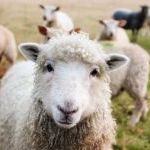Visit a Farm – By ‘Landbrug og fødevarer’
The organisation ‘Landbrug og fødevarer’ (Agriculture and Food) has created a website that lets you connect to your local farmers. They have collected around 350 farmers through out the country that open their farms to school visits. To help teachers create a beneficial learning experience, the organisation has developed course material that offers different perspectives and topics depending on the kind of farm you visit, the grade of the class and so on. Some the offered courses include for example: ‘Ida and the 40,000 chickens’ (for years 2-4) and ‘The Critical Consumer’ (for years 5-8), and many more.
Website
Visit a Farm – By ‘Landbrug og fødevarer’
Country
Media
Useful UK Links
The Countryside Classroom website lists hundreds of farms and outdoor spaces for schools to visit in the UK.
* TOP TIP *
'Arrange a visit to a local farm near you to discover how they help the climate and local environment'
How is the project linked to climate change and sustainability?
Farm visits and the courses on offer help pupils understand what farming is and how food is produced. Furthermore, it helps the pupils understand different parts of foodchains and how the production affects the environment and climate.
Who is involved?
The project links together teachers, farmers and pupils.
How are participants involved?
The materials provided include different forms of involvement, such as assignments, presentations, class discussions, debates between the pupils and much more. The target group of the materials range from reception children to pupils in higher education. The visit can be structured as physical day on the farm, but during Covid restrictions in Denmark, it has also been arranged as an online visit where the farmer live streams from his farm.
Key steps:
1. The teacher should find and connect with a suitable local farm by searching on the internet and making contact with the farmer to discuss the visit and organise the date.
2. Depending on what the farm produces, and the age of pupils in the class, the teacher should then select appropriate educational materials to help provide backround for the visit.
3. The teacher can prepare for the visit by introducing the pupils to topics that are presented in the learning material and find out what the children know, and what they would like to find out.
4. Before the farm visit, the teacher should discuss the themes and topics with the farmer so they can show the parts of the farm and his work day that are directly connected.
5. After the visit follow up sessions in class can discuss the experience and elaborate the choices and dilemmas in the context of food production.
"Great praise to the hosts, for an exciting and empathic story about the operations of the farm and life on Bjerggaarden and Barsø. Pupils (and teachers) had a fantastic experience.”
Padborg, september 2020

